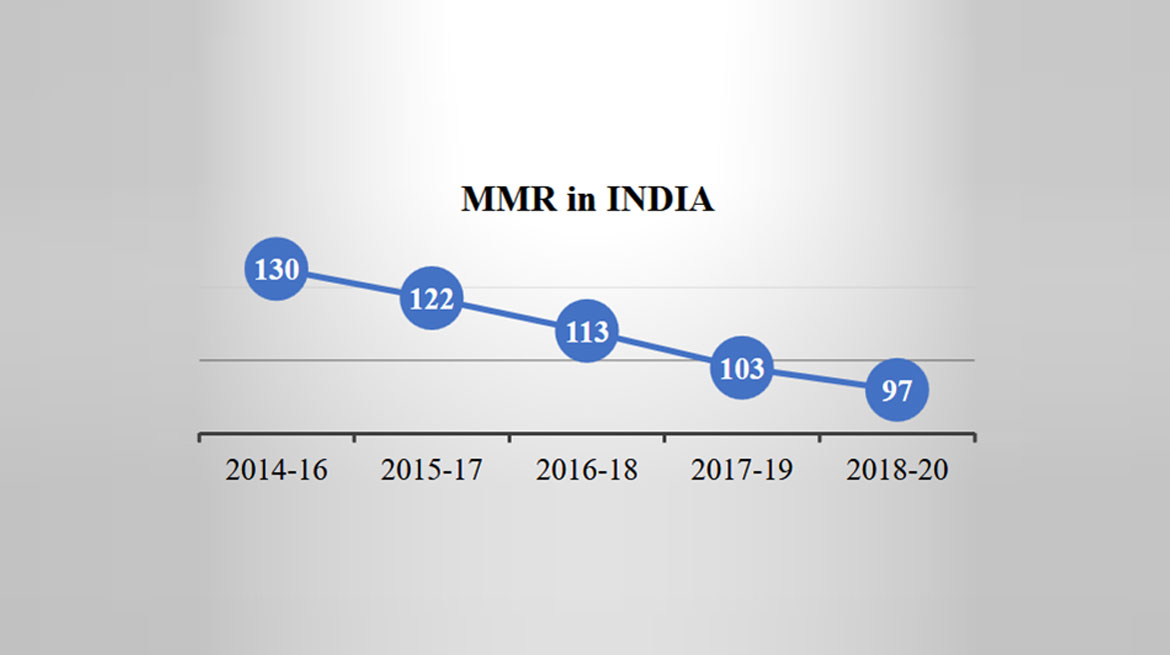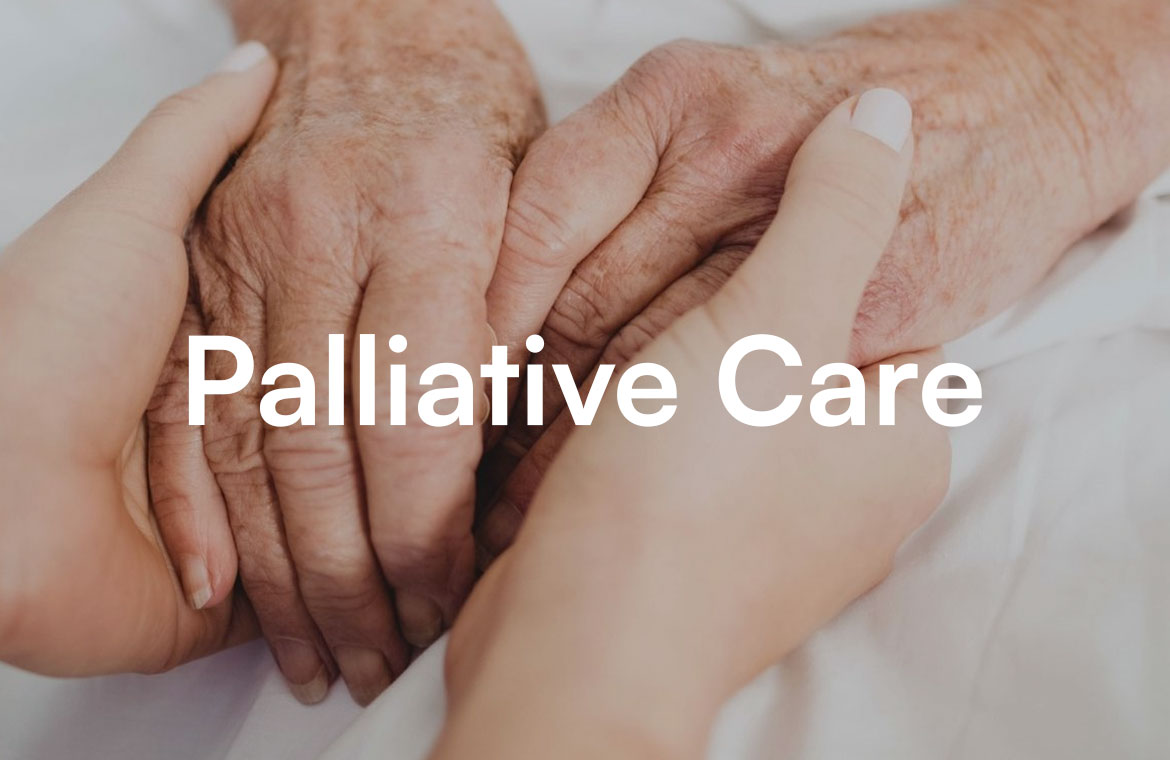(Image Source: (SRS)-SPECIAL BULLETIN ON MATERNAL MORTALITY IN INDIA 2018-20[2].)
(With inputs from Dr. Uma Sadekar, State Family Welfare Bureau, Directorate of Health Services, Goa)
A recent press release by the Ministry of Health and Family Welfare reported that the Maternal Mortality Ratio (MMR) in India declined by an impressive 70% between the years 2000 to 2020[1]. India is now likely to achieve the Sustainable Development Goal (SDG) target of MMR < 70 before 2030, having already achieved MMR of 97 as of the year 2020[2]. The multi-pronged approach rolled out in India to improve maternal health outcomes and to achieve zero preventable maternal deaths appears to have borne fruit. This includes, assured quality and respectful maternity care under the Surakshit Matritva Aashwasan Yojana (SUMAN), Pradhan Mantri Surakshit Matritva Abhiyan (PMSMA), Janani Sishu Suraksha Karyakram (JSSK) to reduce out of pocket expenditure, LaQshya-a quality initiative for labour room and OT, the Midwifery Services Initiative and lastly the Maternal Death Surveillance and Response (MDSR) initiative. As a master trainer for MDSR in Goa, news of this impressive achievement in MMR decline brought me immense happiness. I share below few snippets of the MDSR process which has played a significant role in the decline of maternal deaths in India.
Key terms:
Maternal Death: Death of a woman while pregnant or within 42 days of termination of pregnancy, irrespective of the duration and site of the pregnancy, from any cause related to or aggravated by the pregnancy or its management but not from accidental or incidental causes.
Maternal Mortality Ratio (MMR): Ratio of the number of maternal deaths during a given time period per 100,000 live births during the same time period.
Maternal Death Surveillance and Response (MDSR): The MDSR system is a continuous cycle of identification, notification, and review of maternal deaths followed by actions to improve quality of care and prevent future deaths.
Confidential Review (CR): Multi‐disciplinary anonymous investigation into all or a sample of maternal deaths, to critically observe the line of management adopted in instances of maternal morbidities & mortalities and to identify the avoidable or remediable factors associated with them, so that the same could be corrected in the future.
The MDSR Process[3]:
All the maternal deaths reported are investigated, irrespective of the place of death i.e. at home, in facility or in transit; area of death i.e. rural or urban. Maternal death review process is undertaken at two levels:
- 1. Community level: Community Based Maternal Death Surveillance and Response (CBMDSR).
- 2. Facility level: Facility Based Maternal Death Surveillance and Response (FBMDSR).
In addition, confidential review of cases of maternal deaths is conducted at state level.
Steps in Community Based Maternal Death Surveillance and Response (CBMDSR)[3]:
- Notification: ASHA/Anganwadi worker/family member etc. (Primary Informant) notifies the ANM or the Block Medical Officer, of all women deaths in the reproductive age group (15-49 years) within 24 hours. Medical officer will confirm if it is maternal death.
- Investigation: Every maternal death is investigated by using the Verbal Autopsy technique by a team from the Primary Health Centre.
- Data Transmission: Line list of all women deaths and maternal deaths, Verbal autopsy forms, are sent to District Nodal Officer for onward transmission to State Nodal officer.
- Analysis: Block Medical Officer will conduct analysis and present it at district level meeting.
- Review and response: Data is reviewed at district level by district MDSR committee headed by CMO. Few cases are reviewed by district collector on quarterly basis. Action is taken based on the findings during the review.
Steps in Facility Based Maternal Death surveillance and Response (FBMDSR)[3]:
- Notification: Medical Officer who has treated the mother and was on duty at time of death (primary informant) notifies maternal death to Facility Nodal Officer immediately. Facility Nodal Officer will inform District Nodal Officer within 24 hours.
- Investigation: Medical officer (Primary Informant) investigates the maternal death using FBMDSR format within 24 hours, submits format to Facility Nodal Officer.
- Data transmission: Facility Nodal Officer sends line list of maternal deaths at facility every month, FBMDSR format for each maternal death in 48 hours to District Nodal Officer who reports to State Nodal Officer.
- Analysis: Conducted at level of the facility by the Facility Nodal Officer. Line of management followed is analysed.
- Review and response: FBMDSR committee constituted at facility level and headed by the Facility Nodal Officer reviews all maternal deaths in the previous month. Problem areas are identified and necessary corrective action is taken.
The Three Delays Model:
The analysis of maternal deaths is based on the concept of the “Three Delays Model”:
- Delay 1: Individual and family determinants leading to delay in deciding to seek care.
- Delay 2: Community determinants leading to delay in reaching care/facility.
- Delay 3: Health system determinants leading to delay in receiving care.
How does MDSR Help?
It provides an opportunity to act upon and prevent similar deaths from recurring. We need to IDENTIFY, REVIEW and TAKE ACTIONS TO CORRECT the causes and determinants of maternal death to PREVENT FUTURE DEATHS. The key principle adopted during the entire process of reviewing is not to blame or find fault with anybody, but identify gaps at different levels.
“For each maternal death ……we need to answer: “Why did it happen?” “What we could have done to avert it?”
“Each maternal death has a story to tell…. There are lessons to learn….and lives to save….”
References:
- Ministry of Health and Family Welfare. Government of India, Press Realease 9th October 2024 [Internet]. [cited 2025 Jan 21]. Available from: https://mohfw.gov.in/?q=/press-info/7785.
- Sample Registration System (SRS), Special Bulletin on Maternal Mortality in India 2018-20 [Internet]. [cited 2025 Jan 21]. Available from: https://censusindia.gov.in/nada/index.php/catalog/44379.
- Ministry of health and Family Welfare, Government of India. Guidelines for Maternal Death Surveillance and Response. New Delhi: Ministry of Health and Family Welfare; 2017.




